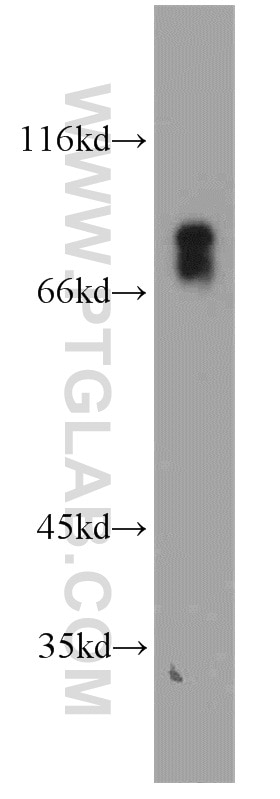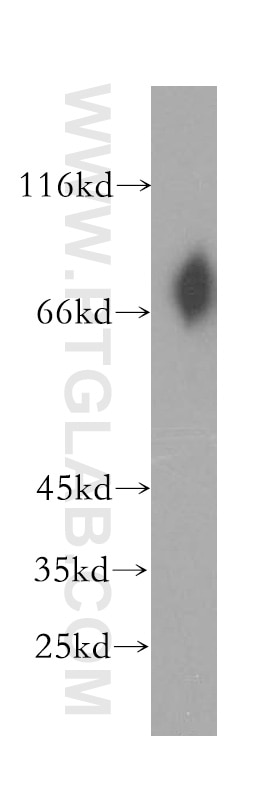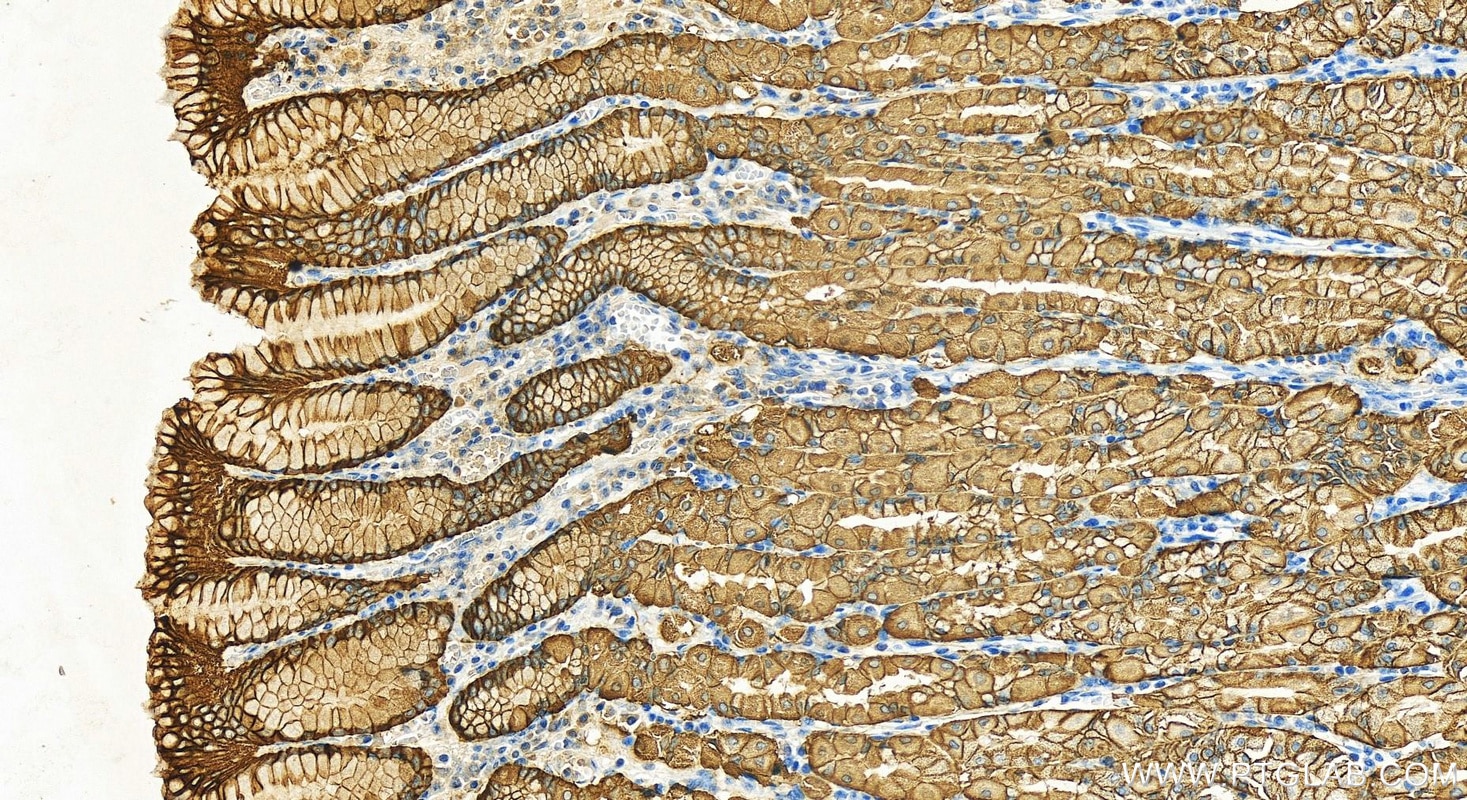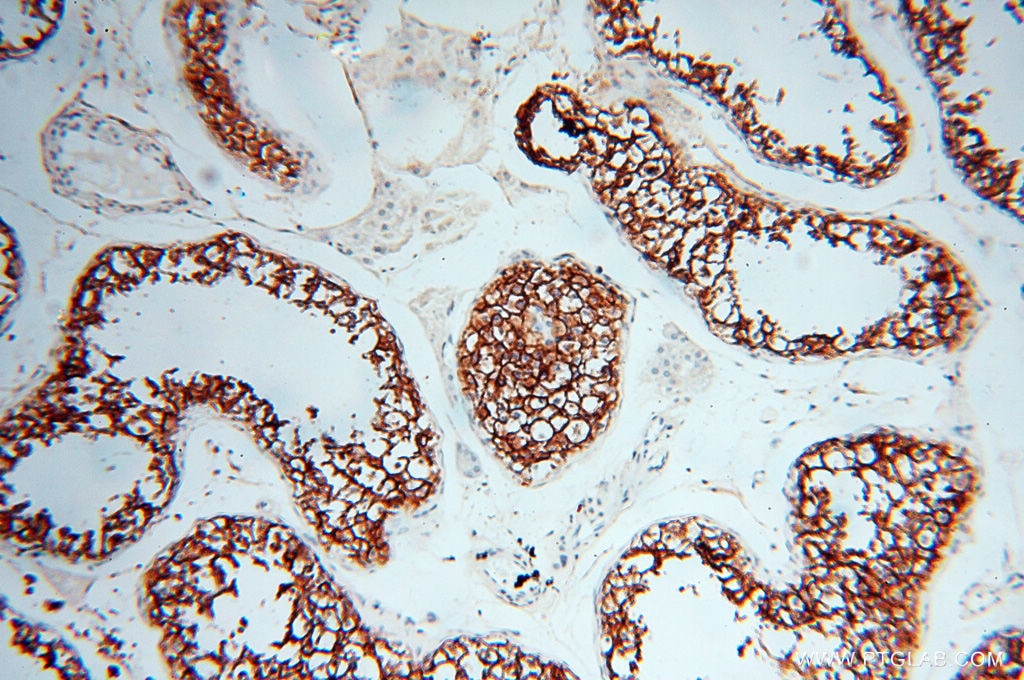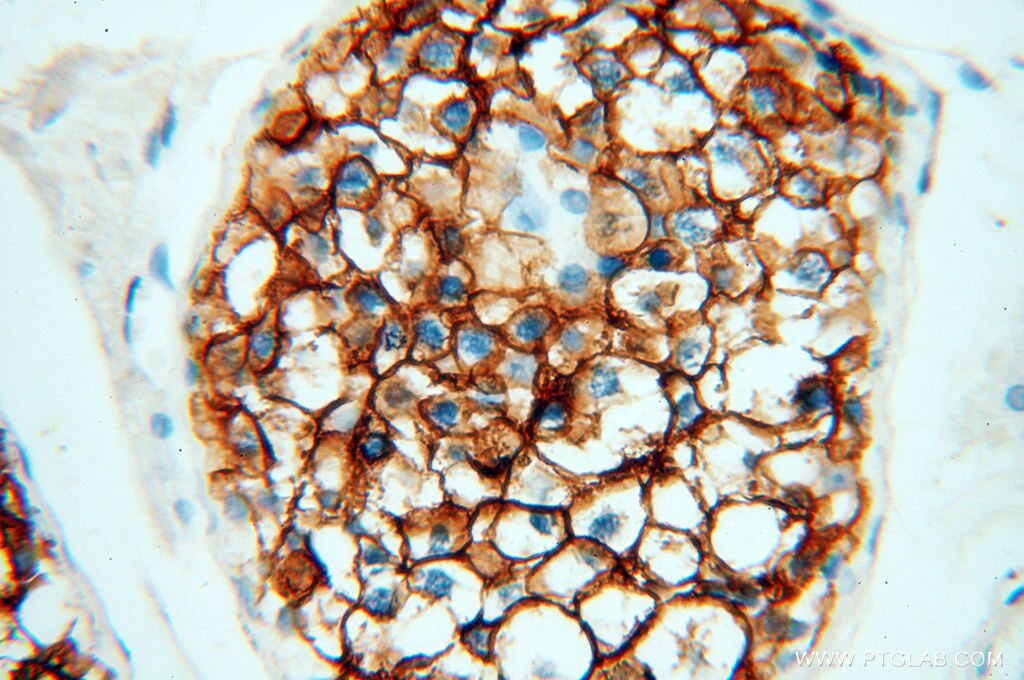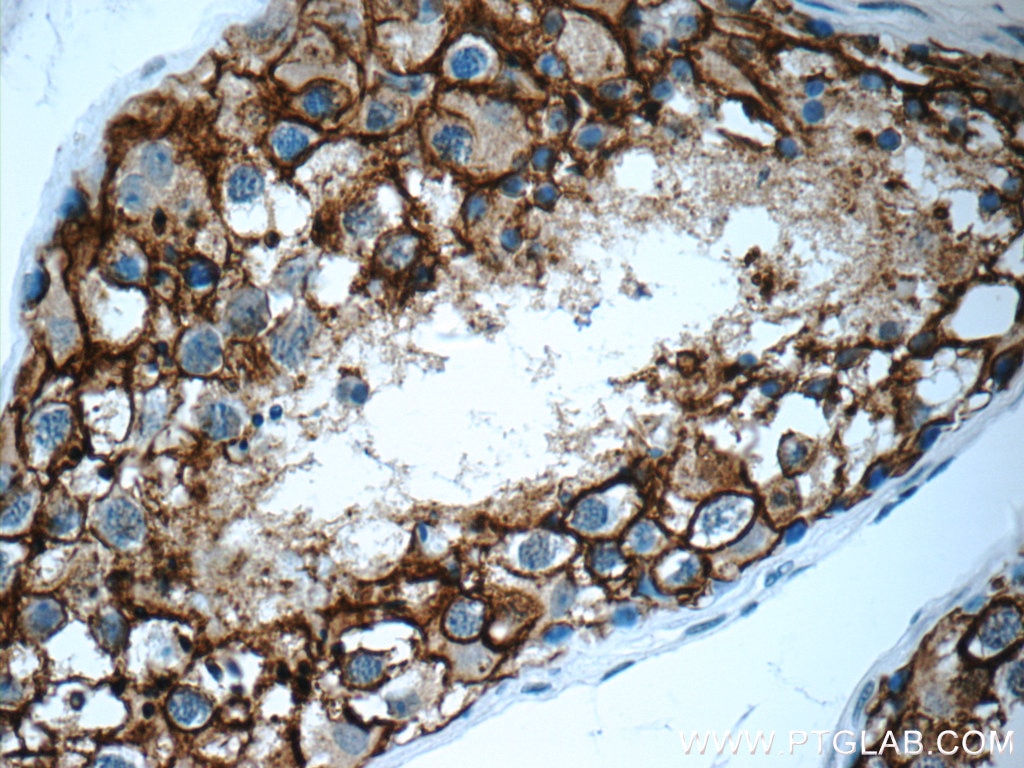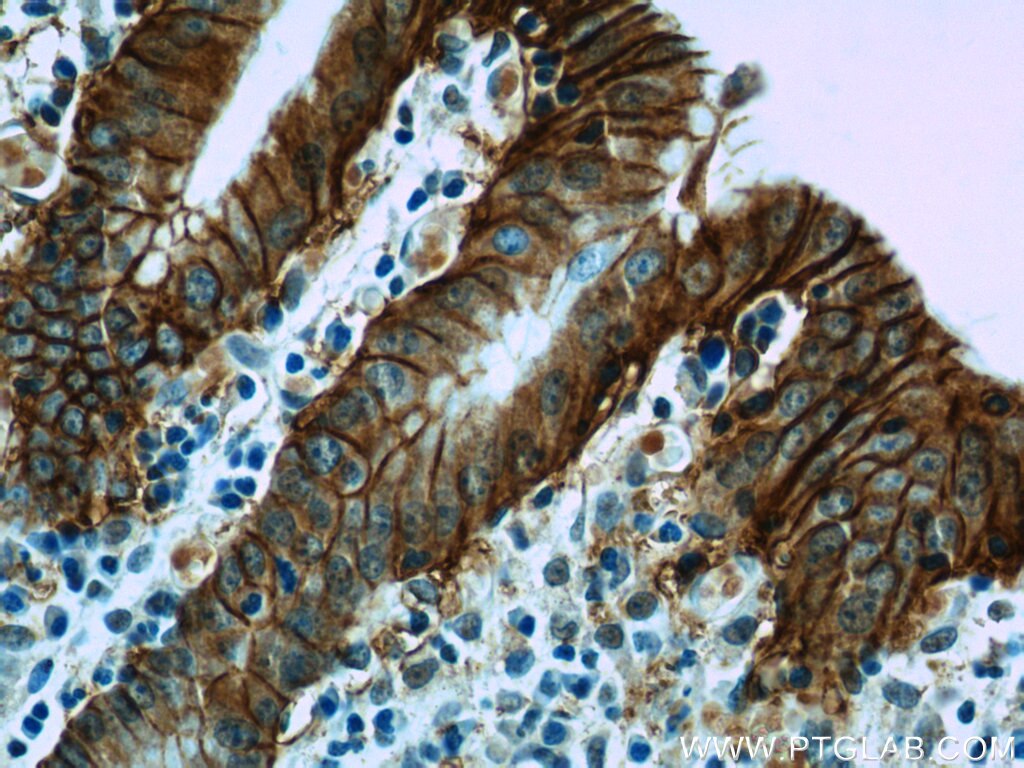Validation Data Gallery
Tested Applications
| Positive WB detected in | human stomach tissue |
| Positive IHC detected in | human stomach tissue, human testis tissue Note: suggested antigen retrieval with TE buffer pH 9.0; (*) Alternatively, antigen retrieval may be performed with citrate buffer pH 6.0 |
Recommended dilution
| Application | Dilution |
|---|---|
| Western Blot (WB) | WB : 1:500-1:3000 |
| Immunohistochemistry (IHC) | IHC : 1:200-1:800 |
| It is recommended that this reagent should be titrated in each testing system to obtain optimal results. | |
| Sample-dependent, Check data in validation data gallery. | |
Published Applications
| WB | See 1 publications below |
Product Information
14145-1-AP targets VSIG1 in WB, IHC, ELISA applications and shows reactivity with human samples.
| Tested Reactivity | human |
| Cited Reactivity | human |
| Host / Isotype | Rabbit / IgG |
| Class | Polyclonal |
| Type | Antibody |
| Immunogen |
CatNo: Ag5314 Product name: Recombinant human VSIG1 protein Source: e coli.-derived, PGEX-4T Tag: GST Domain: 256-387 aa of BC043216 Sequence: FARNKAKAKAKERNSKTIAELEPMTKINPRGESEAMPREDATQLEVTLPSSIHETGPDTIQEPDYEPKPTQEPAPEPAPGSEPMAVPDLDIELELEPETQSELEPEPEPEPESEPGVVVEPLSEDEKGVVKA 相同性解析による交差性が予測される生物種 |
| Full Name | V-set and immunoglobulin domain containing 1 |
| Calculated molecular weight | 387 aa, 42 kDa |
| Observed molecular weight | 65-70 kDa |
| GenBank accession number | BC043216 |
| Gene Symbol | VSIG1 |
| Gene ID (NCBI) | 340547 |
| RRID | AB_2272980 |
| Conjugate | Unconjugated |
| Form | |
| Form | Liquid |
| Purification Method | Antigen affinity purification |
| UNIPROT ID | Q86XK7 |
| Storage Buffer | PBS with 0.02% sodium azide and 50% glycerol{{ptg:BufferTemp}}7.3 |
| Storage Conditions | Store at -20°C. Stable for one year after shipment. Aliquoting is unnecessary for -20oC storage. |
Protocols
| Product Specific Protocols | |
|---|---|
| IHC protocol for VSIG1 antibody 14145-1-AP | Download protocol |
| WB protocol for VSIG1 antibody 14145-1-AP | Download protocol |
| Standard Protocols | |
|---|---|
| Click here to view our Standard Protocols |
Publications
| Species | Application | Title |
|---|---|---|
Cell Cycle Downregulation of cancer-associated fibroblast exosome-derived miR-29b-1-5p restrains vasculogenic mimicry and apoptosis while accelerating migration and invasion of gastric cancer cells via immunoglobulin domain-containing 1/zonula occluden-1 axis |

